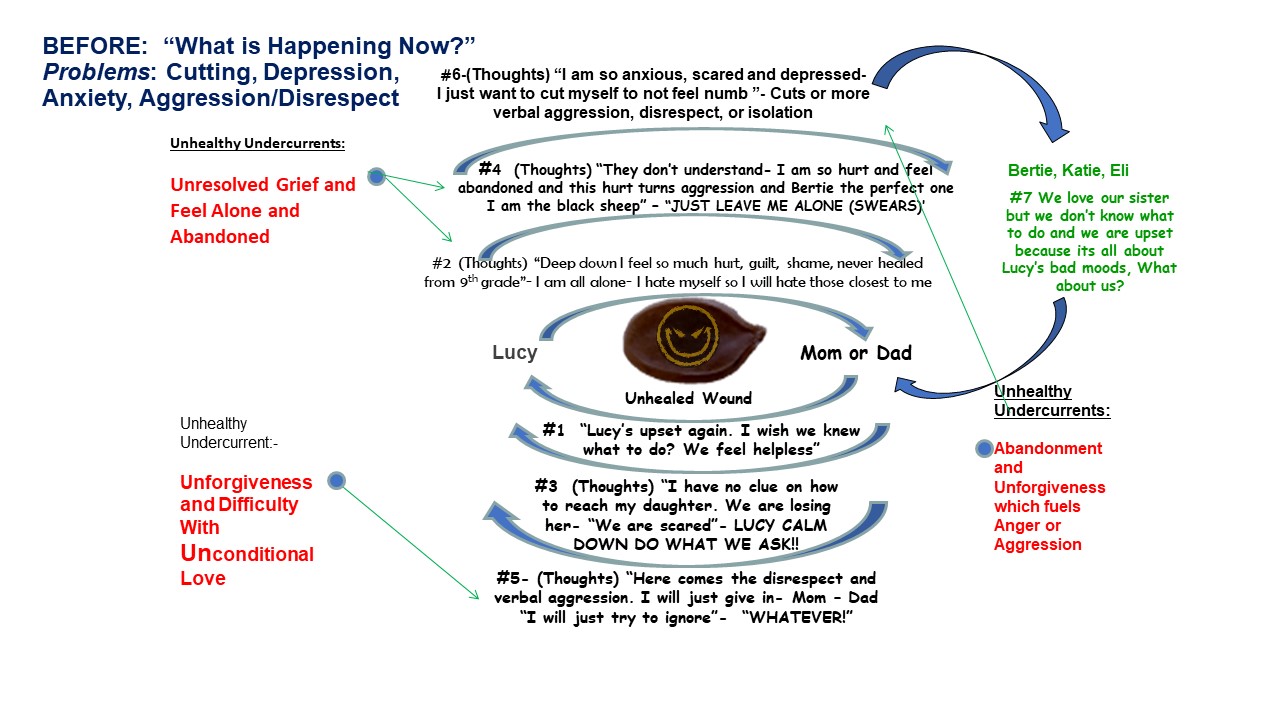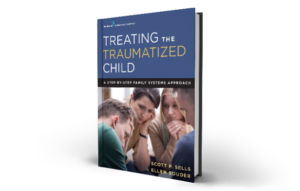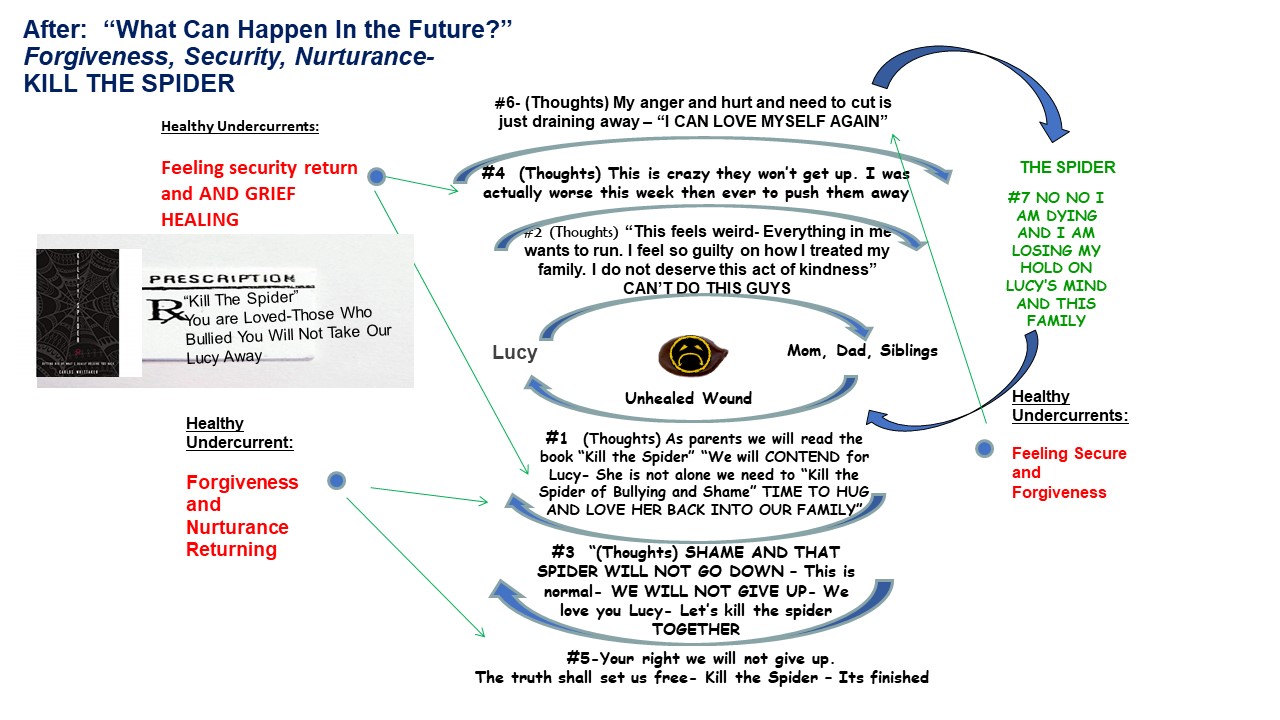Sixteen-year-old Lucy and her family are hopelessly stuck in the weeds.
Lucy is in treatment due to self-harming behaviors (cutting), symptoms of depression, and anxiety. She was bullied through 9th grade at school. Since this traumatic event, her grades continue to plummet, her attendance is sporadic, and she suffers from depression and anxiety.
To add fuel to the fire, the family is embroiled in a cycle of extreme verbal aggression. Lucy curses at her father almost daily. Lucy berates and curses at her mom until mom gives in. Lucy keeps the house in constant chaos until everyone is upset or she has gotten her way. Even though Lucy initiates the abuse, her perception is that it is her family that is abusive.
After six months of treatment, Lucy and the family are stuck in maintenance mode. Lucy is stable, but Lucy and her family have not made significant progress.
What would you do to get this traumatized family unstuck? I was asked to answer this very question.
To get this family unstuck I used the FST Family Systems Trauma Model techniques of Feedback Loops to show Lucy and her family the root causes of Lucy’s trauma symptoms and the FST technique of a Trauma Playbook to present a clear pathway of healing these root causes in the here and now.
Feedback Loops
The family therapist who worked with Lucy and her parents asked that I consult on the case. I used Zoom to conduct the family therapy session after the family signed a release of information.
About 30 minutes into the session, I introduced the feedback loop technique using the following transition statement:
“Before our meeting today, I spent time drawing what we call feedback loops. These visually illustrate my best guess on how you communicate and talk to each other when Lucy is having problems of verbal aggression, anxiety, or cutting. I will show one loop at a time on my PowerPoint slide. After I draw each loop, I will pause and ask you all if it is accurate or if I should change it. Please remember that it is my best guess.
My first drawing is what we call a Before Feedback Loop or what I think is happening in your family right now to prevent you from solving Lucy’s problems. After we see the Before Feedback Loops, I will show you my best guess on what I call “after” feedback loops, or what can happen in the future using what I call wound or trauma playbooks. Let’s begin.”
FAMILY RESPONSE TO BEFORE FEEDBACK LOOPS
The before feedback loop that was used with Lucy’s family is presented in Figure 1 along with a video except of Dr. Sells’ presentation of this loop during the session.
Figure 1: Lucy and Her Family’s Before Feedback Loops

New Insight and Undercurrents (Root Work)
Using before feedback loops will help your work with trauma cases in the following manner:
New Insight
In family therapy graduate schools, students are encouraged or required to map out dysfunctional communication patterns between family members in the form of positive or negative feedback loops. They are often for internal use only and are visual blueprint drawings. The loops are designed help the therapist formulate a clinical hypothesis to help their family get unstuck during the next face to face session. Family members typically never see these drawings.
However, in the FST Model, we discovered that kids and families love to see the feedback loops drawn in front of them. Family members often enter therapy with the individual only mindset of “just fix my kid, they are the sole problem”. But after seeing the before feedback loop a veil is lifted. They see the same problem from a systemic lens of “we all have to change”. The symptom is then expended from just the child to include the entire family. And the child is visually relieved as in Lucy’s case.
Following the illustration of the Before Feedback Loop, Lucy and several family members cried. Their body language signaled relief and hope. Lucy said:
“For the first time, I see it is not just me. I am not alone, and I am not going crazy. This loop thing shows my family and me why I am stuck. What a relief. It’s not all me. It’s those unhealthy undercurrents and unhealed wound seed that must change.”
Lucy’s comments beautifully illustrate White and Epston’s narrative technique of externalizing the problem. The reframe is that the child is not the problem. Instead, the problem or problems are unhealthy undercurrents caused by external unhealed wounds.
We discovered an important fact. Parents were not resistant to family trauma treatment because they did not want to change. They were resistant because they did not have feedback loop drawings to reach a new insight or understanding of why they were needed to heal their child’s trauma.
Undercurrents (Root Work)
Undercurrents in the FST Model are the root causes or drivers of the child’s traumatic symptoms that are often unseen to the naked eye. During the diagnostic and assessment phase of FST treatment, we use the techniques of a stress chart and the seed tree diagram to uncover the key unhealthy undercurrents. Then we use the feedback loops in the next session to illustrate these undercurrents in action inside the family system.
In Lucy’s case the unhealed wound or trauma event of being bullied eventually triggered the following core unhealthy undercurrents:
- Unforgiveness
- Shame
- Abandonment
- Unresolved grief
- Lack of Nurturance
- Isolation
Lucy’s problems were reframed as Killing the Spider. The Spider represented the unhealthy undercurrents and unhealed wound seed that had its own guest bedroom in Lucy’s house. The spider, however, had overstayed its welcome (four years and counting) and it was time for it to get kicked out of the family.

For a detailed step-by-step guide to using feedback loops in your practice, read Chapter Six of Treating the Traumatized Child: A Step-by-Step Family Systems Approach.
FAMILY RESPONSE TO AFTER FEEDBACK LOOPS
The after feedback loop that was used with Lucy’s family is presented in Figure 2 along with a video except of Dr. Sells’ presentation of this loop during the session.
Figure 2: Lucy and Her Families “After” Feedback Loops

Sample Trauma Playbooks
As illustrated in the second video, new possibilities for future change to Lucy’s trauma were made clear within the after feedback loop. Within the FST Model we use what are called Trauma Playbooks.
Trauma Playbooks outline the technique or strategy recommended by the trauma specialist to heal the unhealthy undercurrents using the healthy undercurrent counterparts. The Playbook is framed as an Rx prescription or antibiotic to inject key healthy undercurrents into the family and heal Lucy’s trauma.
In Lucy’s case the technique called a Kill the Spider Trauma Playbook like an antibiotic is used to inject key healthy undercurrents into the family and heal Lucy’s trauma. Using the playbook as a road map, family members in the evening and morning would hug Lucy and hold up cue cards on mini poster board that read:
- You deserve to be loved
- You are part of this family and we love you
- The bullying will not define who you really are in God’s eyes and our eyes—beautiful, a princess, courageous, and a warrior
- You are not damaged, but healing. We are proud of you.
Please click here to view the Kill the Spider Trauma Playbook.
Conclusion
The feedback loops expanded Lucy’s traumatic symptoms from a child only problem to a family systems solution. And in the process, it also began to heal trauma within the other family members. For example, mom started to report that her own depression was much better, dad reported that the marriage was better, and the siblings reported that they were finally able to forgive Lucy and restore their relationship.
For safety reasons, the Kill the Spider trauma playbook was paired together with an anti-aggression behavioral contract. However, it is important to note that the unhealthy undercurrents of shame, unforgiveness, abandonment, and grief were the drivers of the aggression in the first place. Hurting people, hurt others. Therefore, once these unhealthy undercurrents are healed through the Kill the Spider trauma playbook, Lucy’s symptoms of aggression can be eliminated permanently.
Individual childhood trauma treatment may be sufficient for many cases. However, when a child’s PTSD symptoms do not get discernibly better after months of treatment, it is time to try family trauma work.
Family trauma treatment is often the best place to start because the whole is greater than the sum of its parts.
For more information on FST techniques, join Family Trauma Institute’s free monthly webinars.
About the Author
Scott P. Sells, Ph.D., MSW, LCSW, LMFT, is the author of three books, Treating the Tough Adolescent: A Family-Based, Step-by-Step Guide (1998), Parenting Your Out-of-Control Teenager: 7 Steps to Reestablish Authority and Reclaim Love (2001), and Treating the Traumatized Child: A Step-by-Step Family Systems Approach (2017). He can be contacted at spsells@familytrauma.com or through LinkedIn.

